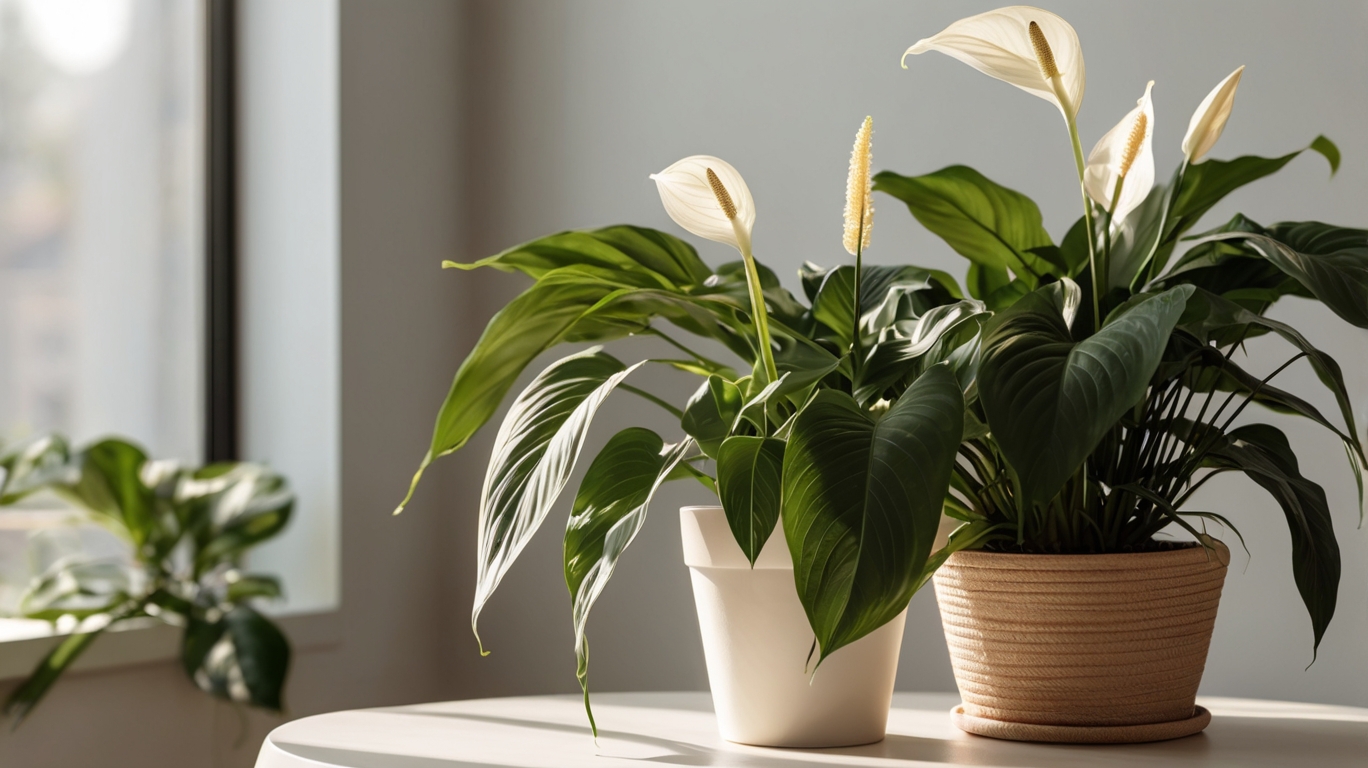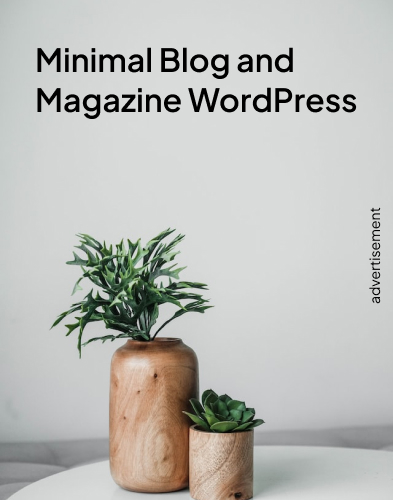5 Powerful Tips on How Often to Water Your Money Plant for Maximum Growth
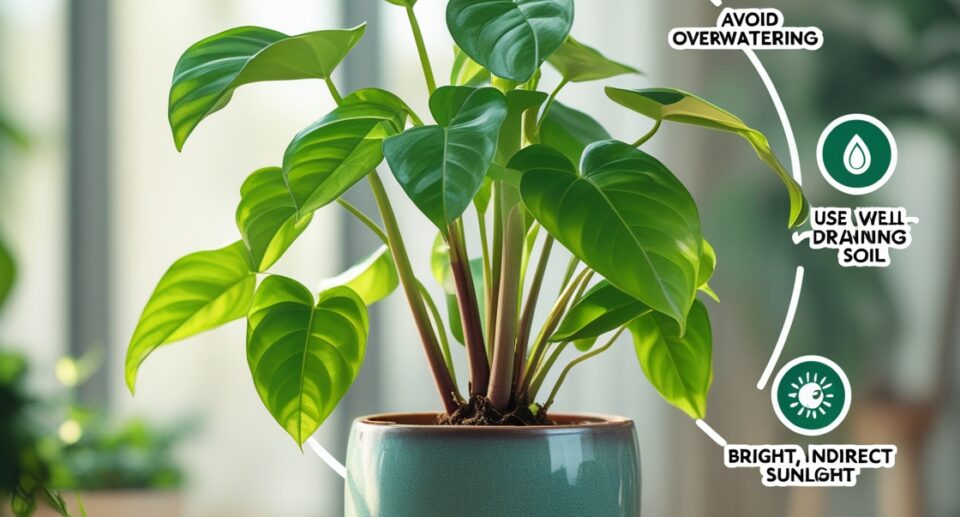
5 Powerful Tips on How Often to Water Your Money Plant for Maximum Growth
Wondering how often to water your money plant? Learn the best watering techniques, seasonal care, and expert tips to keep your money plant healthy and thriving. Avoid overwatering and underwatering with our complete guide!
Introduction
The money plant (Epipremnum aureum), also known as Devil’s Ivy, is a popular indoor plant celebrated for its vibrant green leaves and reputation for bringing prosperity and good luck. While it’s relatively low-maintenance, one critical aspect of its care is watering — too much or too little can harm its growth. Understanding the right watering schedule not only keeps your money plant healthy but also prevents common issues like root rot or dry leaves.
In this comprehensive guide, we’ll explore how often to water a money plant, taking into account different factors like climate, pot type, and seasonal variations. Let’s help your plant thrive!
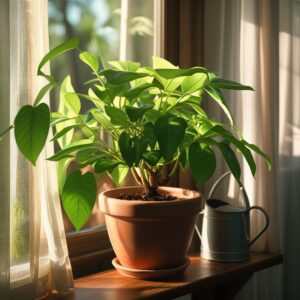
Understanding Money Plant’s Water Needs
Because of its resilience and adaptability, the money plant is a favorite among both novice and experienced plant lovers. Even though it can tolerate some neglect, regular watering is still necessary for the best growth.
Why Water is Important:
- Supports photosynthesis, helping the plant produce energy.
- Maintains cell structure, preventing wilting.
- Facilitates nutrient absorption from the soil.
Money plants prefer their soil to partially dry out in between waterings, in contrast to certain other plants that require a lot of moisture. Growing around tree trunks or rocky surfaces, where water drains fast, is their natural environment; hence, they detest damp roots.
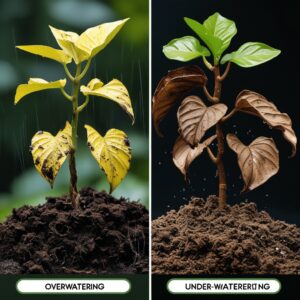
Factors Affecting Watering Frequency
How often you water your money plant depends on several key factors:
1. Temperature & Climate:
- Warm climates: Plants dry out faster — water every 2-3 days.
- Cool climates: Soil retains moisture longer — water every 7-10 days.
2. Pot Size & Type:
- Terracotta pots: Absorb moisture — require more frequent watering.
- Plastic pots: Retain moisture — water less often.
- Pot size: Larger pots hold more water, so they dry out slower.
3. Soil Type & Drainage:
- Well-draining soil: (e.g., mix of potting soil, perlite, and sand) dries faster — water more frequently.
- Dense, compact soil: Retains water longer — water less often.
4. Humidity Levels:
- High humidity: Reduces evaporation — space out watering sessions.
- Low humidity: Accelerates soil drying — water more often.
How Often to Water Money Plant Indoors vs. Outdoors
Indoor Watering Schedule:
For indoor money plants, the rule of thumb is to water when the top 1-2 inches of soil feel dry.
- Summer: Every 1-2 weeks, depending on room temperature.
- Winter: Every 2-3 weeks, as growth slows down.
Outdoor Watering Schedule:
Outdoor money plants face more variable conditions. Check soil moisture regularly.
- Hot seasons: Water every 2-3 days.
- Rainy seasons: Reduce watering, ensuring the soil doesn’t stay waterlogged.
Using a moisture meter can help maintain the perfect balance, preventing both overwatering and underwatering.
Best Watering Techniques for a Money Plant
1. Bottom Watering vs. Top Watering
- Bottom watering: Place the pot in a tray of water and let the roots absorb moisture from below. This encourages deep root growth and prevents overwatering.
- Top watering: Pour water directly onto the soil until excess drains out from the bottom. Ensure even distribution.
2. Using Self-Watering Pots
Self-watering pots have reservoirs that release water gradually, making them a great option for busy plant owners.
3. Tips to Avoid Waterlogging
- Always use pots with drainage holes.
- Avoid leaving stagnant water in saucers.
- Elevate pots slightly to improve airflow around roots.
Seasonal Watering Guide for Money Plant
| Season | Watering Frequency | Additional Care Tips |
|---|---|---|
| Summer | Every 2-3 days | Increase misting to maintain humidity |
| Monsoon | Once a week | Check for fungal infections due to excess moisture |
| Winter | Once every 7-10 days | Reduce watering to prevent root rot |
| Spring | Every 4-5 days | Ideal time for pruning & fertilization |
Common Signs of Overwatering and Underwatering
Signs of Overwatering:
- Yellowing leaves
- Mushy, rotten roots
- Mold or fungus on the soil surface
- Wilting despite wet soil
Signs of Underwatering:
- Dry, brown leaf tips
- Wilting with dry soil
- Slow or stunted growth
- Leaves curling inward
Best Soil and Pot Selection for Proper Drainage
Choosing the Right Soil Mix
- Ideal mix: 50% potting soil + 25% perlite + 25% sand for optimal drainage
- Avoid heavy clay soil, which retains excessive moisture
Best Pots for Money Plants
- Terracotta pots: Absorb excess moisture and prevent overwatering
- Plastic pots: Retain moisture longer, better for dry climates
- Pots with drainage holes: Essential to prevent water accumulation
Using Tap Water vs. Filtered Water for Money Plant
Effects of Tap Water:
- Contains chlorine and fluoride, which may cause leaf browning over time
- Allow tap water to sit for 24 hours before use to let chemicals dissipate
Benefits of Filtered or Rainwater:
- Free from harsh chemicals, reducing stress on the plant
- More natural for plant absorption, promoting healthier growth
Money Plant Care Tips for Thriving Growth
- Prune regularly to encourage bushier growth
- Place in bright, indirect sunlight for optimal photosynthesis
- Use organic fertilizers once a month to boost nutrients
- Rotate the plant every few weeks for even growth
- Check for pests like spider mites and aphids, and treat them promptly
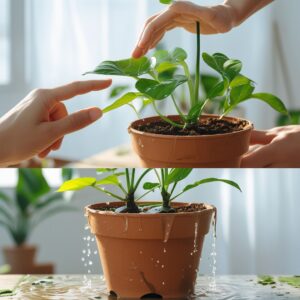
Frequently Asked Questions (FAQs)
Q1: How do I know if my money plant needs water?
Check the top 1-2 inches of soil—if dry, it’s time to water.
Q2: Can I mist my money plant instead of watering it?
Misting helps maintain humidity but doesn’t replace soil watering.
Q3: What happens if I overwater my money plant?
Overwatering leads to root rot, yellow leaves, and fungal growth.
Q4: Can I water my money plant with ice cubes?
No, ice-cold water shocks the roots; use room-temperature water instead.
Q5: Should I change my watering routine in winter?
Yes, reduce watering since the plant’s growth slows down.
Conclusion & Call to Action
Watering your money plant correctly is crucial for its health and longevity. By considering factors like climate, pot type, and soil condition, you can create an optimal watering routine that prevents common problems like overwatering and underwatering.
Now that you know how to care for your money plant, share your experiences in the comments below! Do you have any special tips for keeping your plant thriving? Let’s grow together!
Click the link below to buy “FLOWER Retro Wooden Stand Plant Terrarium with 3 Bulb Glass Vases for Hydroponic Home & Office Décor”.
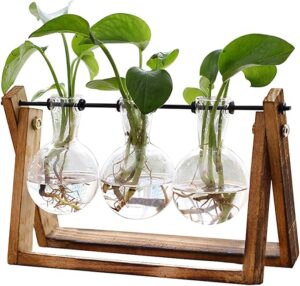
Click Here
Click the link below to buy “6-inch modern ceramic planter with glaze, drainage hole, and saucer for indoor & outdoor plants.”
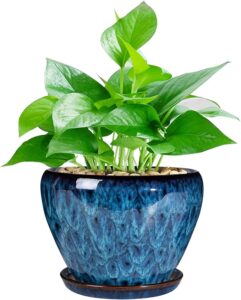
Click Here




